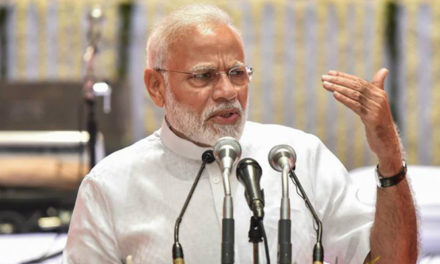 India will have to raise its labour productivity growth to 6.3 per cent to achieve 8 per cent gross domestic product (GDP) growth, according to India Ratings and Research (Ind-Ra), which recently said to attain 9 per cent GDP growth, labour productivity growth will have to be raised to 7.3 per cent. The labour productivity growth in fiscal 2018-19 was 5.2 per cent.
India will have to raise its labour productivity growth to 6.3 per cent to achieve 8 per cent gross domestic product (GDP) growth, according to India Ratings and Research (Ind-Ra), which recently said to attain 9 per cent GDP growth, labour productivity growth will have to be raised to 7.3 per cent. The labour productivity growth in fiscal 2018-19 was 5.2 per cent.
India’s labour productivity growth between fiscals 2004-05 and 2007-08 was 8.5 per cent. It came under pressure in the aftermath of the 2008 global financial crisis. However, it recovered thereafter and grew at 5.8 per cent from 2015-16 to 2018-19.
The challenge on the productivity front for India is two-fold, Ind-Ra said. First, how to raise the overall labour productivity to a level that delivers the required GDP growth rate, and second, how to lift the labour productivity in the lagging sectors so that growth is more evenly balanced and sustainable over the medium- to long-term.
Sectors like manufacturing (7.2 per cent), electricity, gas, and water supply (7.7 per cent), transport, storage, and communications (7.4 per cent), and community, social, and personal services (6.2 per cent) contributed significantly to the overall labour productivity between 1999-2000 to 2015-16. The sectors that lagged are construction, agriculture and mining, which recorded labour productivity growth of 0.4 per cent, 3.2 per cent and 4.8 per cent respectively. On the contrary, China maintained a labour productivity of 6.5 per cent and above across all sectors during the same period.
Ind-Ra believes a closer monitoring of the sources GDP growth is vital. As labour productivity is only one-factor or partial-factor productivity measure explaining GDP growth, decomposing the factor inputs into quantity of labour, quality of labour, information and communication technology (ICT) capital, non-ICT capital and total factor productivity (TFP) provides a better perspective on the sources of GDP growth.
The company believes the quantity of labour along with the non-ICT capital will continue to contribute significantly to the GDP growth due to the demographic composition. But, any decline in the contribution of quality of labour and ICT capital is a matter of concern.
While the inability of the workforce to upgrade its skill in line with the technological, business, managerial changes in the Indian economy appears to be the reason for the former, a slowdown in capital expenditure lately appears to be the cause for the latter.
Productivity-related challenges can have an adverse impact on economic expansion, profit growth and societal welfare in India. Since longer and sustainable productivity growth critically depends on how much businesses invest in innovation, knowledge, and intangible capital, and how committed governments are to structural reforms, Ind-Ra believes it is imperative that structural changes in the factor, product and labour markets are given priority.










